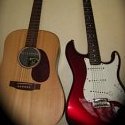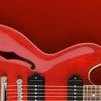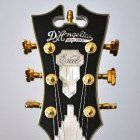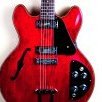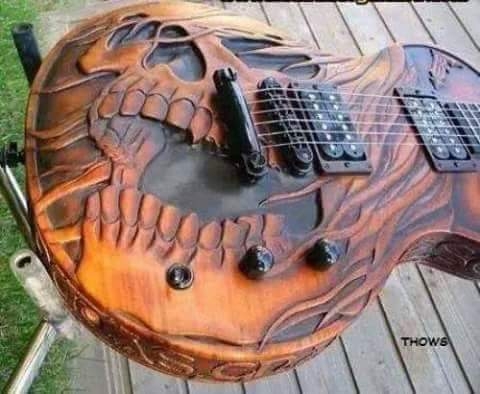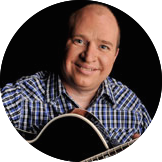Leaderboard
Popular Content
Showing content with the highest reputation on 01/18/2018 in all areas
-
Back in 2012 there were requests for the tempos of the tracks on the L&MG Play-Along CDs, so I measured each one. Here is the list again for Steve's new site. Disc 1 Tuning The Guitar Disc 1 Ode To Joy (Slow Version) 56 Disc 1 Ode To Joy (Medium Version) 70 Disc 1 Ode To Joy (Fast Version) 90 Disc 1 Jingle Bells (Slow Version) 60 Disc 1 Jingle Bells (Medium Version) 76 Disc 1 Jingle Bells (Fast Version) 93 Disc 1 Yankee Doodle (Slow Version) 56 Disc 1 Yankee Doodle (Medium Version) 84 Disc 1 Yankee Doodle (Fast Version) 120 Disc 1 When The Saints Go Marchin' In (Slow Version) 72 Disc 1 When The Saints Go Marchin' In (Medium Version) 90 Disc 1 When The Saints Go Marchin' In (Fast Version) 132 Disc 1 Love Me Tender (Slow Version) 62 Disc 1 Love Me Tender (Medium Version) 72 Disc 1 Love Me Tender (Fast Version) 82 Disc 1 Minuet In C (Slow Version) 48 Disc 1 Minuet In C (Medium Version) 68 Disc 1 Minuet In C (Fast Version) 78 Disc 1 Simple Gifts (Slow Version) 50 Disc 1 Simple Gifts (Medium Version) 60 Disc 1 Simple Gifts (Fast Version) 70 Disc 1 The Star Spangled Banner (Slow Version) 50 Disc 1 The Star Spangled Banner (Medium Version) 60 Disc 1 The Star Spangled Banner (Fast Version) 70 Disc 1 Minuet In G (Slow Version) 52 Disc 1 Minuet In G (Medium Version) 68 Disc 1 Minuet In G (Fast Version) 88 Disc 2 Tuning The Guitar Disc 2 Morning Has Broken (Slow Version) 72 Disc 2 Morning Has Broken (Medium Version) 90 Disc 2 Morning Has Broken (Fast Version) 118 Disc 2 America the Beautiful (Slow Version) 56 Disc 2 America the Beautiful (Medium Version) 70 Disc 2 America the Beautiful (Fast Version) 84 Disc 2 Scarborough Fair (Slow Version) 80 Disc 2 Scarborough Fair (Medium Version) 106 Disc 2 Scarborough Fair (Fast Version) 132 Disc 2 Greensleeves (Slow Version) 66 Disc 2 Greensleeves (Medium Version) 80 Disc 2 Greensleeves (Fast Version) 102 Disc 2 The Banana Boat Song (Slow Version) 70 Disc 2 The Banana Boat Song (Medium Version) 100 Disc 2 The Banana Boat Song (Fast Version) 125 Disc 2 Home on the Range (Slow Version) 70 Disc 2 Home on the Range (Medium Version) 100 Disc 2 Home on the Range (Fast Version) 130 Disc 2 Yellow Rose of Texas (Slow Version) 62 Disc 2 Yellow Rose of Texas (Medium Version) 82 Disc 2 Yellow Rose of Texas (Fast Version) 100 Disc 2 Jamaica Fairwell - in F (Slow Version) 72 Disc 2 Jamaica Fairwell - in F (Medium Version) 98 Disc 2 Jamaica Fairwell - in F (Fast Version) 116 Disc 2 Jamaica Fairwell - in G (Slow Version) 72 Disc 2 Jamaica Fairwell - in G (Medium Version) 96 Disc 2 Jamaica Fairwell - in G (Fast Version) 116 Disc 3 Tuning The Guitar Disc 3 La Bamba (Slow Version) 70 Disc 3 La Bamba (Medium Version) 100 Disc 3 La Bamba (Fast Version) 130 Disc 3 The Wabash Cannonball (Slow Version) 82 Disc 3 The Wabash Cannonball (Medium Version) 140 Disc 3 The Wabash Cannonball (Fast Version) 232 Disc 3 Blues In E (Slow Version) 64 Disc 3 Blues In E (Medium Version) 94 Disc 3 Blues In E (Fast Version) 132 Disc 3 House Of The Rising Sun (Slow Version) 60 Disc 3 House Of The Rising Sun (Medium Version) 75 Disc 3 House Of The Rising Sun (Fast Version) 132 Disc 3 Canon In D (Slow Version) 48 Disc 3 Canon In D (Medium Version) 80 Disc 3 Canon In D (Fast Version) 114 Disc 3 A Minor Pentatonic Blues 80 Disc 3 G Major Pentatonic 82 Disc 3 Around The Pentatonic World 122 Disc 3 Rockin' 96 Disc 3 Suspended Smooth 72 Disc 3 Acoustic Groove 84 Disc 4 Tuning The Guitar Disc 4 C Jam Blues (Slow) 100 Disc 4 C Jam Blues (Fast) 175 Disc 4 Johnny's E Blues (Slow) 85 Disc 4 Johnny's E Blues (Fast) 116 Disc 4 Bending The Blues 82 Disc 4 Jazz Octaves 105 Disc 4 The Funky Mute 112 Disc 4 Power Chord Rock 128 Disc 4 Power Riffs 100 Disc 4 Rolling Along 78 Disc 4 A Little Bit Rocky 92 Disc 4 Electric Funk 92 Disc 5 Tuning The Guitar Disc 5 Triplet Scale Practice (Slow Version) 60 Disc 5 Triplet Scale Practice (Medium Version) 70 Disc 5 Triplet Scale Practice (Fast Version) 98 Disc 5 Pop Ballad Groove 90 Disc 5 ZZ Shuffle 2 150 Disc 5 Swingin 120 Disc 5 Swingin (Without Guitar) 120 Disc 5 Jazz Blues (With And Without Guitar) 116 Disc 5 Ear Training Exercise 1 60 Disc 5 Ear Training Exercise 2 110 Disc 5 Ear Training Exercise 3 102 Disc 5 Stevie's Groove 72 Disc 5 Chord Exercise 1 84 Disc 5 Chord Exercise 2 176 Disc 5 Friend 104 Disc 5 Funky Groove 945 points
-
Hi UncleHammy. I've been listening to Tuesday night Live Lessons for years, but I only recently joined the forum. Here's my entry -- an old favorite from the Beatles "Revolver" album. I recorded it using Presonus Studio One. I hope you enjoy it as much as I enjoyed recording it. https://soundcloud.com/user-198649149/kg-and-your-bird-can-sing-3-2-17-key-of-c-with-drums4 points
-
“An Evening With Joe Pass” is a treat for any guitar student who is interested in tackling jazz guitar. I hope you will find it inspirational, educational and motivational. The preceding player’s profile comes from the “20th Century JAZZ GUITAR” free e-book by Richie Zellon, and serves as a brief historical background regarding the artist. “Joe Pass BEBOP, HARD BOP Joe Pass (Joseph Anthony Passalaqua) was born on January 13, 1929 in New Brunswick, New Jersey and raised in Johnstown, Pennsylvania. His father, an Italian steel-worker bought him his first guitar at age 9 and encouraged him to learn songs and improvise by ear after witnessing the youngster’s early musical tendencies. By the time he was 14, Pass was already working with local bands and later went on the road at 18 with the Tony Pastor band. After serving in the military he spent a period in New York during which he started using drugs and eventually ended up spending time in several rehabilitation centers as well as jail. As a result of his drug addiction, Pass spent most of the 50’s in obscurity. After over 10 years trying to kick drugs, Pass entered the Synanon Center in California where he made his famous Sounds of Synanon (1961) recording with other residents who were also jazz musicians. Upon leaving Synanon, Pass gradually became one of the most in demand guitarists in the Los Angeles studio scene where he worked for 10 years. During this period he worked as a sideman with Louis Bellson, Frank Sinatra, Sarah Vaughan, Joe Williams, Della Reese, Johnny Mathis, as well as on numerous TV shows including The Tonight Show starring Johnny Carson, The Merv Griffin Show, The Steve Allen Show, and others. After recording several albums for the Pacific Jazz and World Pacific labels throughout the 60’s, Pass was signed by Norman Granz, the producer of Jazz at the Philharmonic and founder of Verve Records to his new Pablo Records label in 1970. In 1974, Pass released his now classic solo album Virtuoso. This initial recording along with the entire series that followed, has redefined the art of solo jazz guitar. As a result of these solo recordings and concerts, Pass finally achieved the notoriety he deserved and was consistently listed in the jazz polls year after year. During this same period at Pablo, he recorded a set of widely acclaimed guitar/vocal duet records with Ella Fitzgerald. Joe Pass died from liver cancer in Los Angeles, California, at the age of 65.”2 points
-
Joe Pass is one of my all time favorites in the Jazz genre. The solo album "Virtuoso" is simply astonishing. Any guitarist who gives it a good listen, whether they like jazz or not, will sit there in awe. Chord melody, lightning fast runs, bass lines, beautiful interpretation, the album has it all. I've listened to it many times, and never tire of it. You should too. Another great artist gone too soon. Here's the album uploaded to YouTube; "He weaves his own fast-moving chords and filigree work so nimbly that it is hard to believe fingers can physically shift so quickly. Slight moustached, fairly balding, he frowns over his fretwork like a worried head waiter with more guests than tables but the sound that comes out could only be the confident product of years of devotion to the instrument... But it is when he plays completely solo, which he does for half of each set, that he comes into his own, because without hindrance of the rhythm section he can completely orchestrate each number. Sometimes it is by contrasting out of tempo sections with fast-moving interludes, sometimes by switching mood from wistful to lightly swinging, sometimes by alternating single-note lines with chords or simultaneous bass line and melody-the possibilities seem endless. Luckily, there is a new L.P. by him which captures all this on vinyl, as someone has had the unusual good sense to record him all alone. It is calledVirtuoso and rightly so." - Miles Kington on Pass in an October 1974 article in The Times.[6]2 points
-
Here is my contribution for this month. I bought a Udemy course 'Audio + Music Production in Logic Pro X' in the Black Friday sale and have been slowly working through it. I have to say that it's brilliant, I'm having lot's of 'so that's what that function is for' and 'so that's how you do it' moments. I thoroughly recommend the course if you have Logic Pro X. Anyway, this month I decided to submit a multi-track effort to practice and apply some of what I've learned (before I forget it all). Ian2 points
-
An Easy System To Memorize Every Major Scale For each major scale, memorize the altered notes (sharps or flats) only if they constitute the minority, otherwise memorize the naturals. For example, in the case of B major you would memorize that B and E are natural and that the rest are sharp. Next, simply recite the musical alphabet starting with B and make every note “sharp” except for B and E: B – C# -D# – E – F# – G# – A# Memorizing just B and E for the above, is much easier than having to memorize C#, D#, F# , G# and A#! Here is a list of the 12 major scales as they appear on the descending (counterclockwise) CIRCLE OF FIFTHS starting with C MAJOR and what to memorize: C MAJOR: All natural — C D E F G A B Major Scales With Flats: F MAJOR: memorize Bb, the rest are natural — F G A Bb C D E Bb MAJOR: memorize Bb and Eb, the rest are natural — Bb C D Eb F G A Eb MAJOR: memorize Eb, Ab and Bb, the rest are natural — Eb F G Ab Bb C D Ab MAJOR: memorize C, F and G, the rest are flat — Ab Bb C Db Eb F G Db MAJOR: memorize F and C, the rest are flat — Db Eb F Gb Ab Bb C Gb MAJOR: memorize F, the rest are flat — Gb Ab Bb Cb Db Eb F Major Scales With Sharps: B MAJOR: memorize B and E, the rest are sharp — B C# D# E F# G# A# E MAJOR: memorize E, A and B, the rest are sharp — E F# G# A B C# D# A MAJOR: memorize C#, F#, and G#, the rest are natural — A B C# D E F# G# D MAJOR: memorize F# and C#, the rest are natural — D E F# G A B C# G MAJOR: memorize F#, the rest are natural — G A B C D E F# For the enharmonic scales (C# or Db, F# or Gb and B or Cb) at the bottom of the Circle of Fifths, memorize: C# MAJOR: all are sharp — C# D# E# F# G# A# B# F# MAJOR: memorize B, the rest are sharp — F# G# A# B C# D# E# Cb MAJOR: all are flat - Cb Db Eb Fb Gb Ab Bb1 point
-
Over the years Steve Krenz has created some wonderful short video lessons and tips, called Guitar Tips, Guitar Tips of the Pros, and Tip of the Month. Here is a selection of those videos from YouTube; (in no particular order, titles are at the top of each video. Not a comprehensive list, so if you find others, feel free to add any not already inserted here) I hope you find them as useful and enjoyable as I have!1 point
-
Here's a bonus one. Not sure it fits the theme, but I was playing around with 'Songbird' last night (mainly as vocal practice). This is a single, live take that I recorded on a little Zoom recorder then imported into Logic just to add a little reverb and compression and then lift the level. Regarding the guitar, I was talking in the chat room the other night; I'm fairly comfortable with fingerstyle now where I just set my right hand going on auto-pilot whilst playing simple chords. I have reached a psychological roadblock though about adding in melody notes (my coordination just falls apart). The instrumental middle on this (and the intro) would be much more interesting with some melody notes, hammer-ons etc. Going to make it a resolution to crack that this year! Ian1 point
-
Superb as always Ian, beautifully sang and played, I was jigging to the beat!1 point
-
Grog my wife would certainly agree with your assessment of my hard headedness...1 point
-
You are a good friend! My thoughts and prayers are with you and your friend.1 point
-
I see you are in the same boat I am in.... When I started to try to streamline and go paperless, it made me review the shocking amount of resources I currently have. I am beginning to think I may have a slight problem, lol!1 point
-
One of our local stores used to carry Art & Lutherie (and still might). One of my friends bought an Art & Lutherie acoustic for their daughter many years ago, and I was quite impressed with its quality. And of course Seagull makes excellent acoustics as well. I'm not familiar with any that have electronics though. Yes, the mother company really does a great job!1 point
-
But the rate of osmosis is a function of solute concentration differential.............Oh wait! You're saying I am thick skulled1 point
-
1 point
-
I really want to come to the next one. But I have my best friend to take care of and she can't come. She is geriatric now and I don't leave her alone. When she passes I will be taking a road trip to one of these conferences.1 point
-
In the old forum I posted my NGD for my new ES-339. In the post I explained that my wife bought me an ES-335 Studio for Christmas and totally surprised me. She even hid it over at my parents house so I wouldn't know that she bought it. I pretty much thought that Christmas was over and she brought it out. A TOTAL surprise! The only problem is that I already have an ES-335. There was the ES-339 at the local Guitar Center that I had my eye on. I asked her if it was OK to trade in the ES-335 and get the ES-339 and she told me that whatever I wanted to do was fine. I played the ES-335 for a day and really liked it, but there was that ES-339 on the wall at Guitar Center. I took her with me the day after Christmas to show her the ES-339 and she thought it was an awesome guitar too. I guess the biggest factor in my decision to trade in the ES-335 was that it was used and missing the Certificate of Authenticity. So back it went. I really like the ES-339 and played it for a couple of weeks. I just kept thinking about that darn ES-335. My wife has never actually bought me a guitar before. She's been there almost every time I purchased one, but never gone out on her own and purchased a guitar. I was feeling the guilt. I was actually at Guitar Center talking to one of the employees I know (which is most of them) and I mentioned that I would love to have that guitar if it had the Certificate of Authenticity. He told me he would see what he could do. It hung on the wall for a couple of weeks and I kept dropping by and asking about the Certificate. The Guitar Center employee kept saying that he was too busy and he would see if he could track it down when he got a chance. I learned later that someone came in and played the ES-335 for about an hour and was close to buying it. That made him remember that he promised me he would check on the Certificate. Luckily for me, the guy didn't buy it and they were able to track down the Certificate. Short story long, here is my new-to-me 2016 ES-335 in Ginger Burst: A closeup: And the beautiful back too: It did have a problem with the bridge pickup. This was my first time working on a hollow body with no access plate and let me tell you - it sucks! I had to pull the pots through the F hole, work on them, and pull them back through. Not fun. It's working great now! Part of the reason I bought it back was that it sounded so good (and, you know, because my wife bought it for me)! Ben1 point
-
UncleHammy, I took the blues scale boxes chart and I've been putting it under my pillow every night. But dang, it doesn't seem to be working. I thought it would.1 point
-
Just what I need Dave, more resources that I can't get to. Could you find a website that could give me more practice time? That would be really useful. I am currently working on osmosis, if I keep buying resources surely some of them will be absorbed just from proximity, right???1 point
-
Barbara - that is another reason why I like the Fingerstyle Journal. I much prefer electronic versions. I also subscribe to the electronic version of Acoustic Guitar. I wish all publications had that option.1 point
-
I like to view a full capo as a moveable nut with an additional change in your "open" tunings.1 point
-
I have watched all of sections 1and 2 and have identified at least 6 challenges that hold me back.? I really like the way that this instructor explains things and has broken it all down into sizeable chunks. Now I am going to watch section 2 again and work on my challenges with the first warmup/exercise. ???1 point
-
1 point
-
Here is a piece to get the ball rolling. It’s by Tarrega and it is called Adalita. It is a constant work in progress for me, and a fall back piece if I’m running out of ideas at a wedding. I hope you enjoy it.1 point
-
1 point
-
Do this 5 min a day, nice and slow, and concentrate on no finger fly-off. Again...nice and slow. Going fast is no help. Don't ladder up the speed. Just do it slow for 5 min in control. Not really new information here, just another perspective and presenter. Being in control is the goal. https://www.youtube.com/watch?annotation_id=annotation_801604117&feature=iv&src_vid=qQNaxGUB9fY&v=1Ok8lj6eJ781 point
-
Last year's Fingerstyle Retreat was one of the nicest events I have ever attended. Below are some words of wisdom taken from the song arranging session with John Knowles (CGP). Every time you learn to do something, learn how to do it somewhere else on the fretboard. Your best work happens when you are working in areas where you 60% know and 40% can’t do yet (this is where adventure happens). Each one of us has a different tolerance for being confused. When I’m working too hard, I put it down and play something I know how to play. When you are learning, there is exploration, new technique, musicality, tempo, and expression (you can’t think of all these things at once - work on one at a time). It never has bothered me that I can’t do it YET! Tomorrow I will be closer – don’t be discouraged by the barriers. There is no destination, only so far – so far – so far – so far – then they write your obituary. Set modest goals and celebrate. You need patience, you need to love it, and you need curiosity. Chet Atkins: (in response to someone saying ‘that looked easy’). 'It didn’t use to be.' I play what I love – and work on what I can’t do yet.1 point
-
1) Set aside a specific time or time of day to practice. It doesn’t need to be a lot of time – but it does need to be CONSISTENT. CONSISTENCY IS MORE IMPORTANT THAN QUANTITY 2) Select a time when your mind is FRESH. QUALITY IS MORE IMPORTANT THAN QUANTITY It’s not quantity of minutes that matters – it’s the quality of the minutes that you do put into it. 3) 20 Minutes of focused practice time for 6 days out of the week. (120 minutes total) 4) Get a metronome. 5) Get a journal and write down your progress. (It’s the only way to measure some things.) SHOW HOW TO USE A METRONOME 6) Get a good music stand. 7) Prepare an area to learn. 8) When you practice, BE RELAXED – Your mind learns better when not under pressure. 9) When you practice, BE FOCUSED. Ruthlessly eliminate distrations. 10) Keep Learning Materials close by – Books, Guitar, Metronome, Pencil. 11) Get a Learning Buddy.1 point
-
The session-specific Roadside Assistance videos, and dozens more by Steve, are available on YouTube here. Many people are now discovering our community through Live Lessons and the summer conferences, instead of the Learn & Master DVD course. For their benefit, and because the new forum is not — at least at the outset — organized by course session, reprinted here is Steve’s outline (originally posted in 2009): Here is the basic overview of the course by topic and what I am trying to get you to learn... The Basics and Finger Exercises – Session 1 The Big Idea: To get your fingers used to playing the guitar and finding the right places on the fretboard. Also to toughen the fingers up for the road ahead. Learning to Read Music and Learning the Notes in the First Position – Sessions 2-4 The Big Idea: Being able to read a simple melody and be able to play it on guitar in the first position. Learning Basic Open Chords – Sessions 5-6 The Big Idea: Being able to form and play basic open chords in the first position using basic eighth note strumming. Learning Barre Chords, Major Scales, and Keys – Sessions 7-8 Two Big Ideas: 1) Overcoming the physical challenges and being able to play 6th and 5th string based barre chords. 2) Understand major scales and keys. Strumming and Intervals – Session 9 Two Big Ideas: 1) Gain familiarity with basic strumming patterns using ties. 2) Be able to identify intervals correctly. Fingerstyle Guitar – Session 10 The Big Idea: Overcoming the physical challenges of basic Fingerstyle technique. Pentatonic Scales – Session 11 The Big Idea: Learn how pentatonic scales function and how to play them on guitar. Advanced Chords – Session 12 The Big Idea: Expanding your chord form repertoire and using chord substitutions. Blues Scales and Triads – Session 13 Two Big Ideas: 1) Playing blues scale forms. Introducing improvising and soloing. 2) Spelling triads from memory. Various Technique Issues and Basic Chord Harmony – Sessions 14-15 Two Big Ideas: 1) Gain a basic understanding and familiarity with several guitar playing techniques. 2) Basic understanding on how chords work together. Advanced Strumming – Sessions 16 The Big Idea: Overcoming the physical challenges and gaining familiarity with 16th note based strumming. 3 Note on a String Scales and Seventh Chords – Session 17 Two Big Ideas: 1) Learning the guitar neck by playing and using 3 note on string scales. 2) Spelling seventh chords from memory. Jazz Chords and Harmony – Session 18 Two Big Ideas: 1) Expanding chord repertoire with more forms. 2) Chord alteration and harmony. Soloing Concepts – Session 19 The Big Idea: Using your ear to foster creativity when soloing. Chords, Abbreviations, and Inversions – Session 20 The Big Idea: Learning remaining important chord forms. I hope this helps clarify some things for you. Keep Learning and Growing! — Steve Krenz1 point
-
by Steve Krenz [First appeared: November 21, 2013] If you are like me, you appreciate straight talk – especially when it comes to something that is important to you, like learning guitar. There are just way too many opinions, by too many people, and too little time to wade through them all to find the real information. So, here are a few things, from where I sit, that every learning guitarist should know. 1) Decide. Are you going to do this or not? Is learning guitar and playing music an important goal in your life? If it is ever going to be more than just a “wouldn’t it be great” and a “maybe some day” kind of a hope, then you need to get busy. Stop waiting for the perfect time to get started. It will never come. Inspiration is for amateurs. Decisions, goals, and actions are what get any job done. Decide, then start. 2) Don’t wait for free time, PLAN time to learn. Everyone’s busy. Waiting to practice until you have some free time is a recipe for finding yourself a week from today not having touched your instrument. Think about your daily schedule and decide where you can fit in a few moments to practice. Set this time aside and be faithful to it. 3) Consistency is more important than quantity of time. The old saying goes “only practice on days you eat.” The human mind learns best in regular, consistent, small doses. You’ll find you learn and retain more in 15 minutes a day for 5 days than a 3 hour “binge” practice session on the weekend. Don’t believe me? Try it and see. 4) When practicing, work and reach. Don’t fool yourself into thinking, “just because I have my guitar in my hands, I’m getting better.” Progressing in your learning comes from “reaching” – from doing things that you can’t do. It comes from struggling with a new task, fumbling around, making mistakes, eventually getting better at it, until slowly more successful attempts are made. If you’re not “reaching” and “struggling”, then you’re not progressing. 5) Never waste a good mistake. Learn from it. Don’t make a mistake and think “well, I just messed up.” If you make the same mistake more than once then stop and think about what happened. What specific musical task did you stumble over? Isolate it, and analyze it. Was it the change between two specific chords? Or, perhaps, you’re consistently overreaching to get a particular note? You’ll find that your mistakes are hardly ever random. They are very specific. Find what you stumble over, isolate it, practice it slowly until you can play it consistently correct, then put it back into context within the song. Be a student of your mistakes so that you can learn from them. 6) Record your progress - seeing the flower bloom. When you finally get that new exercise down make a short video of yourself playing it. Try to make one video a week. After three months, you’ll be able to clearly see the progress you are making. Recording yourself helps you measure your progress but it also helps you learn how to switch from “practice mode” to “performance mode” which is a vital skill. 7) Bring someone else along in your learning journey. It’s no fun learning alone. Involve someone else in your learning journey. Play your new song for your spouse, or friend. It’s not about them being “impressed” with your playing. It’s about having someone to help you be faithful to your commitment to learn. 8) Relax. It’s just guitar. Learning guitar shouldn’t be stressful. It’s a long road toward a very worthwhile and life-enriching end. Relax and enjoy the journey. You’ll learn a lot better. Keep up the great work! – Steve1 point

